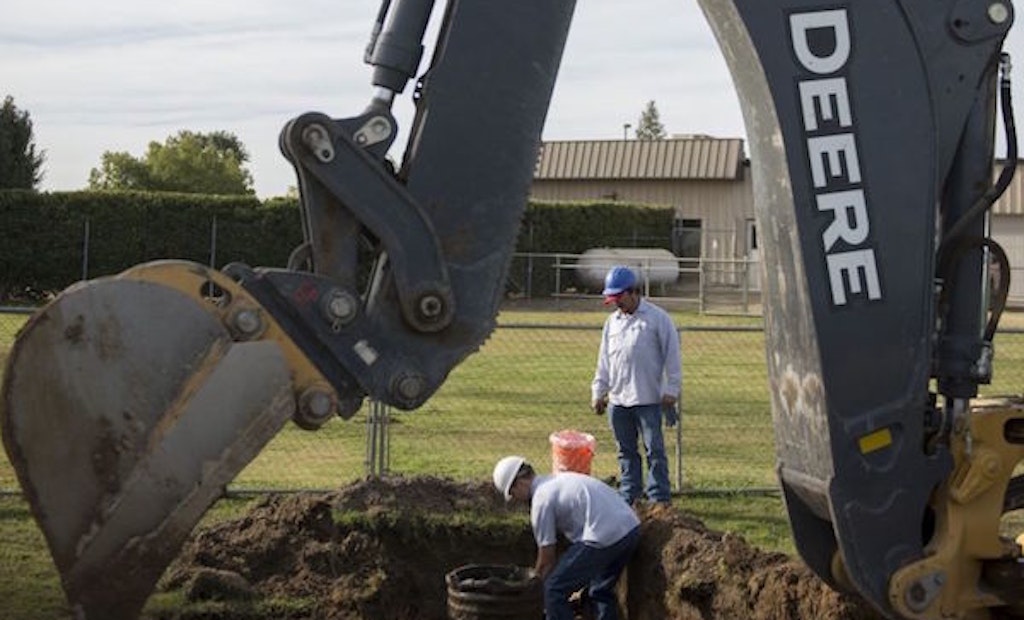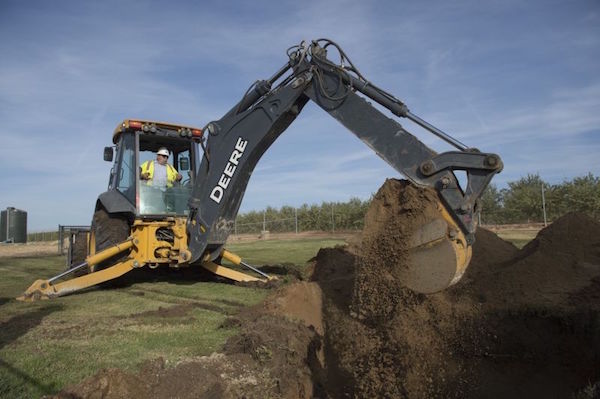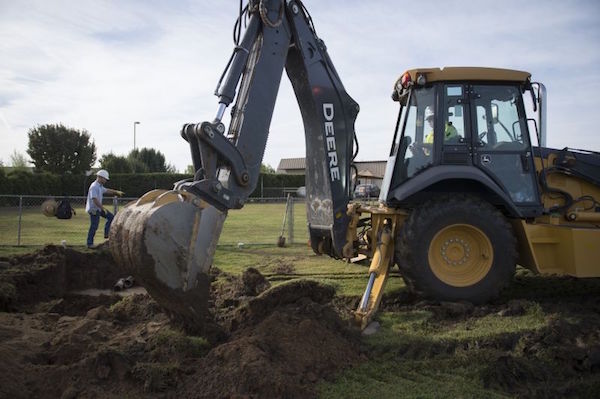
Interested in Business?
Get Business articles, news and videos right in your inbox! Sign up now.
Business + Get AlertsInstalling septic systems is a big piece of the revenue pie at Big Bore Drilling Certified Septic and Hydroflushing in Fresno, California. As such, it’s no surprise that co-owner Henry Damm says his two John Deere 710 backhoes are among his most valuable machines.
“They’re our workhorses,” he says of the wheeled backhoes. “Without them, we wouldn’t be able to do much of anything. The 710s are the biggest backhoe John Deere makes, so we get a lot of power and productivity out of them.”

Foreman Marcello Ruiz uses a backhoe to excavate a sump on a job site in Madera, California, with Big Bore Drilling Certified Septic and Hydroflushing — a central California company located in Fresno that's been providing septic installation, pumping, repairs and certifications since 1959.
Damm says he invests in John Deere backhoes because they’re dependable and durable machines. “Their pins and bushings last a long time,” he notes. “We’ve had some John Deeres run for 20 years while working nearly every day. That’s critical, because a breakdown on a job is expensive, with three guys on an installation crew not working.
“We run very tight in terms of scheduling work,” he adds, emphasizing the importance of reliability. “When we finish one job, we move right on to the next one. So if we have to call a customer and tell them they have to wait, that’s definitely a problem.”

Technician Jason Damm, son of owner Henry Damm, supervises a sump excavation.
The machines feature 130 hp, Tier 4 low-emission engines (a requirement in California), air conditioning, a 9,277-pound lifting capacity and an optional extended-boom package that provides greater digging depth — up to 21 feet. “Some leach lines we install can be 15 to 16 feet deep, with 10 feet of hardpan and 6 feet of cover (soil), so we need the power and the depth,” says Damm.
Damm says he also likes the adjustable, armrest-mounted joystick operating controls because they're ergonomically designed and easy to use. And from the cab, a wide expanse of tinted glass provides a panoramic view of job sites, which improves safety. He also says routine maintenance is easy because the machines are so well engineered.





